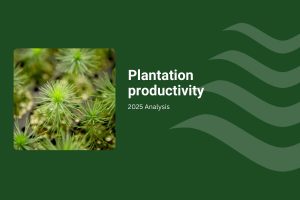On current trajectories, Australia faces the prospect of being consistently unable to meet demand for new housing, because of a persistent and growing gap between demand and supply of sawn softwood timber, in particular. Taking immediate action to establish new softwood plantations, Australia can mitigate the risk and increase its sovereign supply capability for its most critical and sustainable building resource, a new report for FWPA finds.
By no later than 2050, Australia will have:
- A population between 33.62 and 39.97 million people
- New housing demand around 259,000 dwellings per annum
- 5.175 million additional households whose demography will demand a marginally different housing mix to the current distribution of housing formats
- Sawn softwood demand of 6.507 million m3 per annum
- Almost 2.0 million m3 per annum higher than 2021
- Local sawn softwood production static at between 3.600 and 3.800 million m3 per annum due to constraints on sawlog supply
- An Implied Gap between demand and local production of 2.638 million m3 per annum, equivalent to 40.5% of total demand
Importantly, though other housing formats will grow at a faster rate, by 2050, free-standing houses will continue to dominate, accounting for almost 59% of all dwellings in Australia. The modelling finds that to 2050, the fastest growing housing format will be 2+ Storey Townhouses, growth of which will average a very strong 2.55% per annum.
Housing Demand by Type: Annual & Half Decadal: 2021 – 2050 (‘000 Dwellings per annum*)

Source: ABS, NHFIC & IndustryEdge research and estimates
* Annual average of the modelled outputs for the half decade (eight years 2022-30)
| ‘000 Dwellings per annum | 2022-30 | 2046-50 | CAGR28 | 2050 Proportion |
| Houses | 120.03 | 151.68 | 0.84% | 58.7% |
| Townhouses (1 Storey) | 9.46 | 10.34 | 0.32% | 4.0% |
| Townhouses (2+ Storeys) | 19.74 | 39.96 | 2.55% | 15.5% |
| Flats (1 or 2 Storey) | 2.60 | 2.59 | -0.02% | 1.0% |
| Flats (3 Storey) | 3.56 | 2.59 | -1.14% | 1.0% |
| Flats (4+ Storey) | 27.72 | 51.47 | 2.23% | 19.9% |
| Total | 183.10 | 258.62 | 1.24% | 100.0% |
Ultimately, it is this growth in housing that will drive demand for sawn softwood to at least 6.507 million m3 per annum before 2050. With current domestic supply trajectories presently locked in, the Implied Gap to be made up by imports is forecast to average 40.5% from 2046-2050.
To bridge the Implied Gap, Australia could establish as much as 468,000 hectares of additional softwood plantations, commencing immediately.
Implied Sawn Softwood, Sawlog and Plantation Gap: 2021 – 2050 (‘000 m3 & ‘000 Ha)

Source: ABARES, Omega Consulting & IndustryEdge
| ‘000 m3 & ‘000 Ha per annum | 2026-30 | 2031-35 | 2036-40 | 2041-45 | 2046-50 |
| Implied Gap – Sawnwood (‘000 m3) | 499 | 1,055 | 1,529 | 2,066 | 2,638 |
| Implied Gap – Sawlog (‘000 m3) | 1,061 | 2,245 | 3,253 | 4,396 | 5,612 |
| Implied Hectares Required (‘000 Ha) | 88 | 187 | 271 | 366 | 468 |
Ultimately, a continuing role for imports and an expanded softwood plantation estate and domestic production must each be part of the solution that will see Australia bridge the current gap between constrained local production capacity and future demand.
These are important considerations because plantations established today will not yield the bulk of their wood until very close to 2050.



